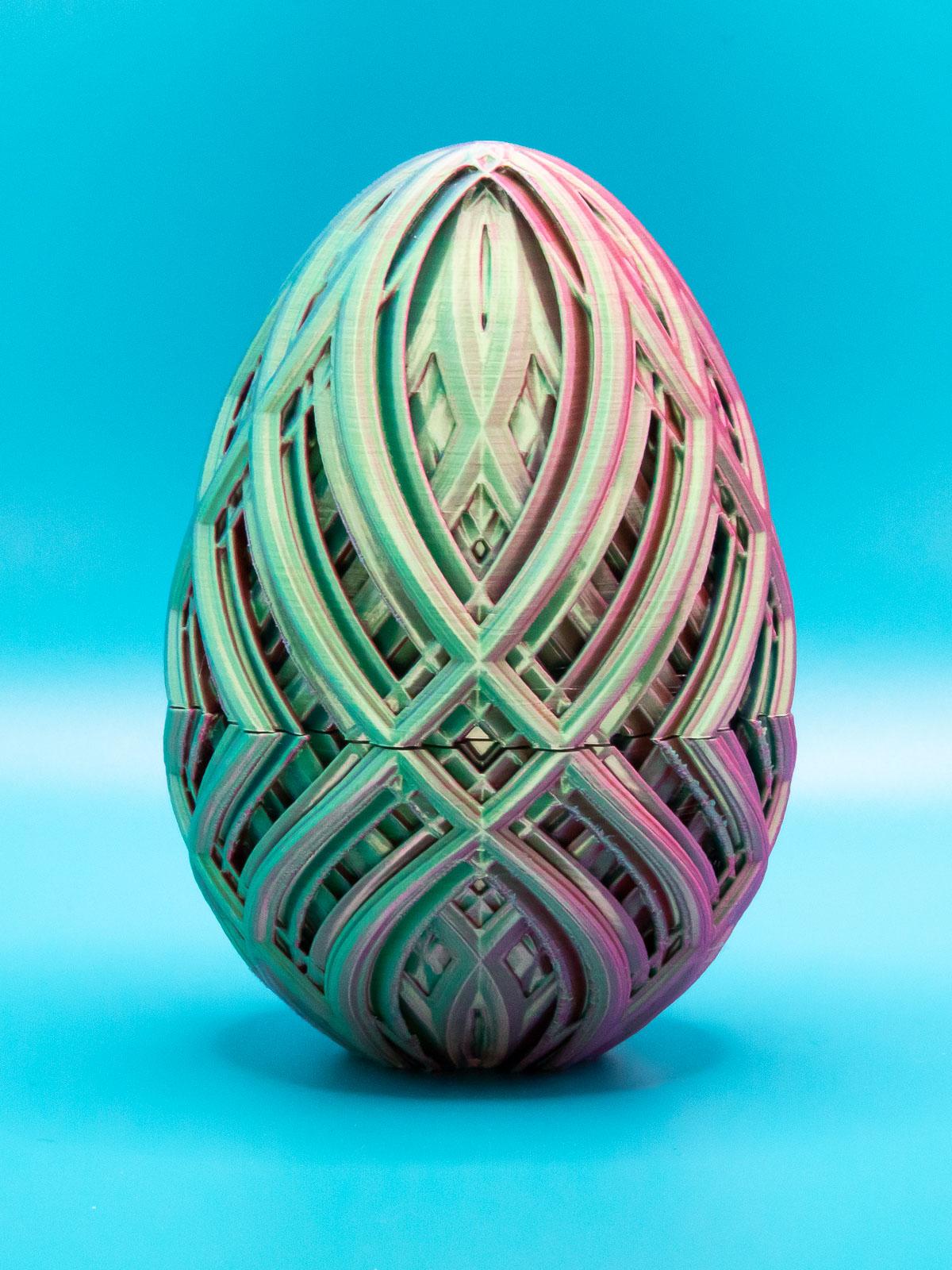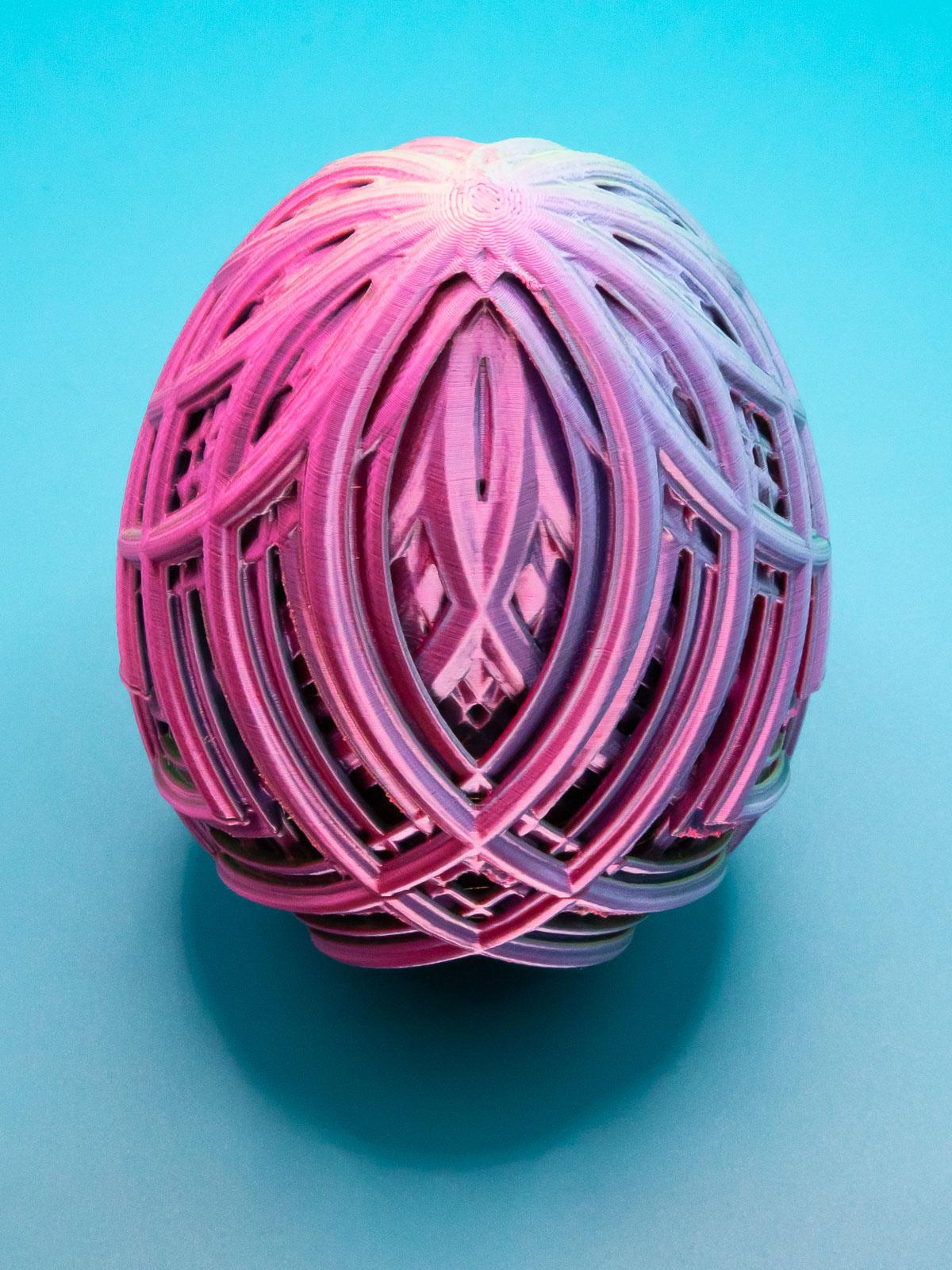Diamond Kaleidoscope Easter Egg
Another fun Easter egg design. You'll see different patterns from different angles and by twisting the pieces.
Not for commercial use. Please see license agreement.
I planned to stop at a dozen egg designs this year, and then, yeah, nope.
I've provided OBJ files rater than STL. The STLs had errors that PrusaSlicer fixed by converting them to OBJ.
Both halves of the egg can be printed “right side up” so you can use 3-color filament or rainbow filament and have the colors match up. Because of the complex moves the printer has to make, it may need to be printed slower than other models.
For settings, you can give it 2 perimeters, 15% infill, and default top and bottom thickness. The top prints best with supports for the inner dome and the bottom works best with a brim or supports for bed adhesion. I used PrusaSlicer's pain-on supports.
To print lighter and save time, you can use the settings I've provided in my PrusaSlicer 3MF files and MKS3+ GCODE. There, I've used layer height adjustments to vary perimeters, infill and top/bottom thickness to reduce weight and improve print time.
To print eggs that fit inside each other like Matryoshka dolls, I recommend scaling to 100%, 68% and 46%.
To open the egg, hold both halves, wiggle & pull apart. The bottom half has a slight ridge on 2 sides that clicks into a groove in the top. Because of that, it's easier to separate them wiggling in one direction than another. If wiggling one way doesn't work, try another direction.
You can loosen the pieces a lot just by twisting them a few times when they're together. Opening them also gets easier with use. And sandpaper is always an option. If that's not enough, consider reprinting with less flow, lower temperature, more elephant foot compensation, but first make sure you have the printer calibrated so the first layer prints well.









